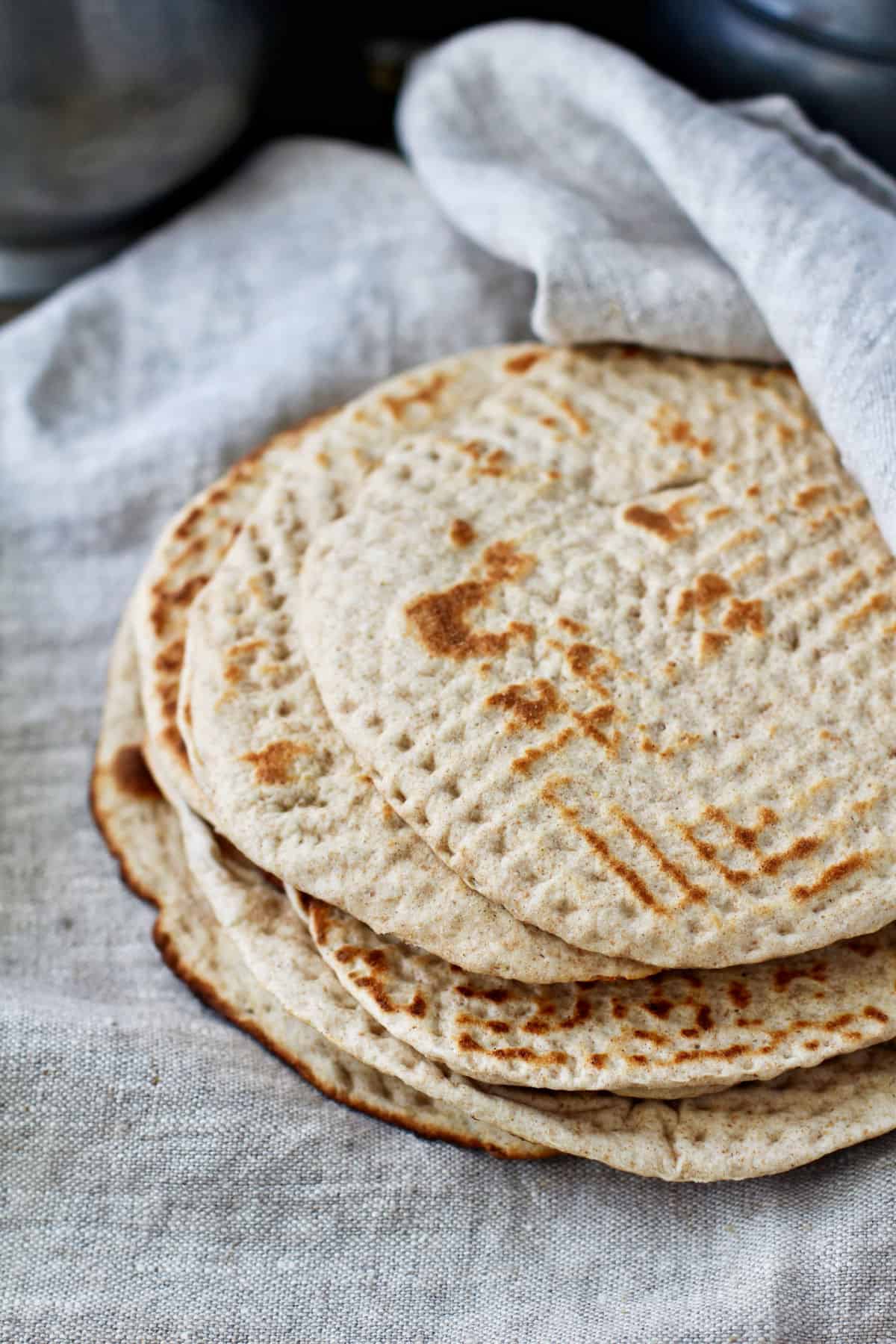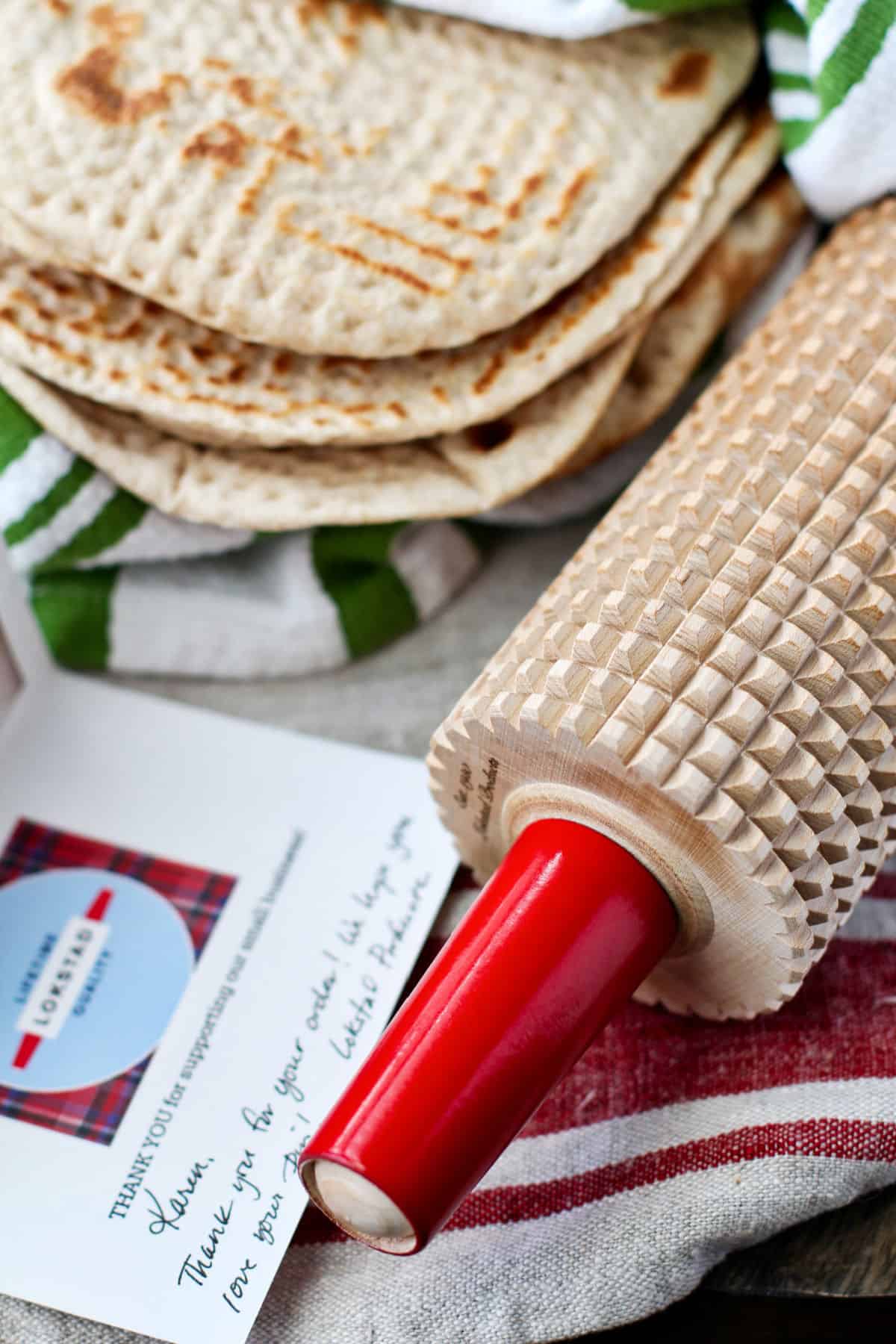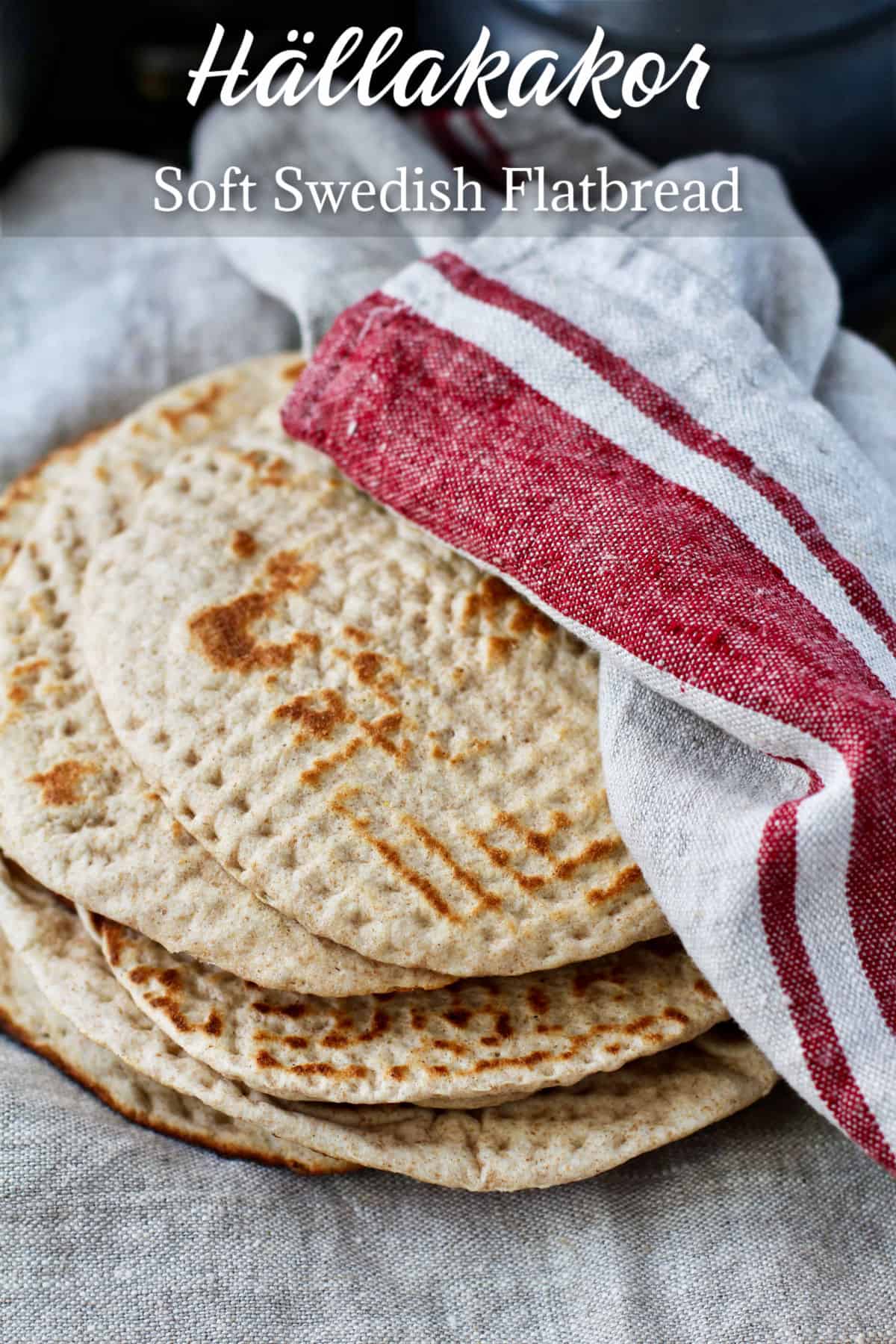Hällakakor is a soft yeasted flatbread from Sweden. It's super easy to make, and can be patterned by rolling it out with specialized rolling pins.
You make these flatbreads decoratively patterned by first rolling them with a grooved rolling pin, and then rolling them with a hard tack pin (one that is carved in a large checkerboard pattern).
I made these with a combination of whole wheat flour, bread flour, and barley flour, but you can use any combination of flours. You are not necessarily looking for a particularly airy crumb, but just a soft texture in the bread.
This bread is delicious fresh from the oven and spread with salted butter or topped with cheese. You can also use it for sopping up gravies from your favorite stews.
You can also add seeds to this bread for extra seasoning such as caraway, anise, or fennel for more flavor.
This bread was introduced to the Bread Baking Babes by Kelly of A Messy Kitchen. She lives in the Pacific Northwest, a part of the country with a huge Nordic tradition, and is conversant in all things baking Nordic and Scandinavian. Plus, her blog is loaded with so many amazing breads. Be sure to give her a visit.
When she introduced us to this bread, the hunt for the right rolling pin began.
While I could not find one with the wide grooves that Kelly recommended (although you could substitute a pasta cutting pin), I was able to find the one with the large carved checkerboard pattern.
I found the hard tack pin from a company called Lokstad that specializes in these rolling pins! My rolling pin arrived with a thank you note!
Isn't that sweet?
How to make this Hällakakor:
First, whisk together the flours, along with some yeast, baking powder, and salt.
Next, add honey or Golden Syrup, butter, and milk, and knead everything together for 15 minutes. Form the dough into a ball and let rise in an oiled bowl for six hours, knocking it back whenever it doubles.
If you want to be really traditional, use baker's ammonia instead of the baking powder. It's an old fashioned ingredient that smells strongly of ammonia, which dissipates as you bake.
You can also place the dough in the fridge overnight and bring it back to room temperature in the morning before shaping and rolling.
I played around with the rolling technique, first using my lefse rolling pin followed by the hard tack pin (my new toy), but finally settled on using a French rolling pin to get the rounds to the right size before rolling them with the patterned pin.
By the way, one of the purposes of these patterned pins is to prevent the rounds from puffing up too much like pitas. They essentially "dock" the dough. You will still have some puffing up, but not as much. Consider it a sign that your bread is just about done.
Once you roll out these rounds, bake them for just one to two minutes per side on a hot baking stone with your oven set as high as it will go.
I rolled out each round as the previous round baked. I used a timer to make sure I didn't burn the flatbreads.
As you pull the flatbreads out of the oven, stack them in a kitchen towel to keep them soft and warm.
Serve this hällakakor while it is still warm. If you have leftovers, wrap and freeze them. You can reheat them on a hot griddle before serving.
More Flatbread Recipes:
Sourdough and Greek Yogurt Flatbread
Mana'eesh (Palestinian Flatbread)
After the recipe, be sure to visit the rest of the Bread Baking Babes' versions of this bread, They are always so creative.
Hällakakor

Ingredients
- 150 grams whole wheat flour
- 200 grams bread flour
- 62 grams whole grain barley or rye flour
- 1/4 teaspoon baking powder
- 6 grams (2 teaspoons) instant yeast
- 8 grams salt (1 1/2 teaspoons Morton's Kosher salt)
- 25 grams honey or Lyle's Golden Syrup
- 20 grams butter, softened
- 235 to 265 grams whole milk
Instructions
- Combine all of the ingredients in the bowl of a stand mixer. Knead with the dough hook for 15 minutes, adding more milk if the dough is too stiff.
- Let the dough rise for 6 hours, knocking it back every time it doubles.
- Divide the dough into 8 rounds, about 85 grams each. Cover and let rise for 20 minutes while heating your oven to 500 degrees F with a baking stone on the middle rack.
- Roll each piece out into a 9 inch round and finish with a patterned rolling pin. You can also dock the dough with a meat tenderizer or a fork and a dough scraper.
- Bake the rounds, 1 to 2 minutes per side. They are done when they just begin to puff and turn brown.
- Stack them as they bake in a dish towel to keep them warm and moist.
- Serve warm.
Nutrition Facts
Calories
284.52Fat (grams)
4.22Sat. Fat (grams)
2.05Carbs (grams)
55.08Fiber (grams)
4.61Net carbs
50.47Sugar (grams)
8.82Protein (grams)
8.36Sodium (milligrams)
440.53Cholesterol (grams)
8.50







Oh, you got a lefse rolling pin too! I love how your breads turned out, just beautiful color and pattern!
ReplyDeleteEver since I made lefse I had to have one!
DeleteBeautiful breads! I love the look of the checkered pattern.
ReplyDeleteThanks Cathy!
DeleteSo cool!! Your hällakakor remind me of some of the kitchen towels that are available - the ones that look like waffles.
ReplyDeleteAnd. Aren't these breads delicious?
I love those towels. They make a great pattern with flour on bread in a banneton!
DeleteYour breads are perfect! Great color. Haha no crumb really with these is there?
ReplyDeleteYou used the smaller amount of barley to make yours. I’ve got to try the smaller amount. I used too much I think and they were very crumbly.
The bread flour probably helps too.
DeleteThey look wonderful - and I love your rolling pins...
ReplyDeleteThanks Katie!
DeleteYour breads are really beautiful. I'm in love with that rolling pin. I'm tempted to get one. :)
ReplyDeleteI wanted to use barley flour but didn't have it on hand....
New kitchen toys are so tempting. I couldn't resist!
Delete